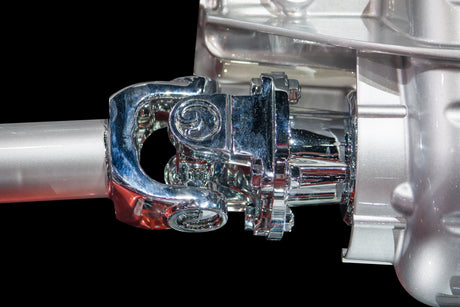Diagnosing and repairing noises from your driveline can be a crucial skill for maintaining your vehicle's health. Strange sounds often signal underlying issues that, if addressed promptly, can prevent more serious damage. In this post, we'll guide you through identifying common driveline noises and how to fix them.
1. Whining or Humming Sounds
Symptoms:
- A whining or humming sound that changes with vehicle speed.
- Noise possibly more noticeable during acceleration or deceleration.
Causes:
- Differential issues such as worn gears or bearings.
- Low or contaminated differential fluid.
Fix:
- Check Differential Fluid: Ensure the differential fluid is at the proper level and replace it if it's contaminated.
- Inspect Bearings and Gears: If the fluid level is correct but the noise persists, you might need to inspect the differential bearings and gears for wear. Replacing these components can be complex, so consider professional help if you're unsure.
2. Clunking or Thumping Sounds
Symptoms:
- A clunking noise when you accelerate or decelerate.
- Thumping or rhythmic banging coming from underneath the vehicle.
Causes:
- Worn U-joints or CV joints.
- Loose driveshaft components or mounting hardware.
Fix:
- Inspect U-Joints and CV Joints: Look for any play, rust, or damage in the joints. Replace worn or damaged joints and ensure they are properly lubricated.
- Tighten Hardware: Check that all bolts and nuts securing the driveshaft are tight and not stripped or worn out.
3. Grinding Sounds
Symptoms:
- Grinding noise when shifting gears or while driving.
- Sound intensifies when under load or during cornering.
Causes:
- Damaged or worn-out bearings inside the differential or driveshaft.
- Misalignment of the driveline components.
Fix:
- Bearing Inspection: If the bearings are the issue, they need to be replaced. This might require disassembling parts of the driveline, so consult a mechanic if needed.
- Alignment Check: Ensure all driveline components are properly aligned. Misalignment can often cause premature wear and unusual noises.
4. Squeaking Sounds
Symptoms:
- High-pitched squeaking noise that changes with speed.
- Noticeable particularly at low speeds.
Causes:
- Worn or dry U-joints.
- Insufficient lubrication in the driveshaft components.
Fix:
- Lubricate U-Joints: Many U-joints have grease fittings; lubricate them according to the manufacturer's specifications.
- Inspect for Wear: If lubrication doesn’t resolve the squeak, inspect the U-joints for wear and replace them if necessary.
Preventive Measures
- Regular Maintenance: Keep up with regular maintenance schedules, including fluid checks and changes.
- Listen for Changes: Always be attentive to any new noises and address them promptly. Early diagnosis can save time and money.
- Professional Inspections: Periodically, have a professional mechanic inspect your driveline to catch potential issues before they escalate.
Diagnosing and repairing noises in your driveline can significantly extend the life of your vehicle and ensure a smoother, quieter ride. By addressing these issues early, you'll save yourself from more extensive and expensive repairs down the line.






